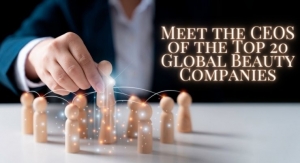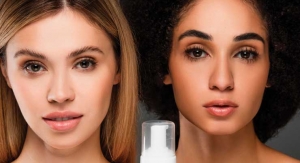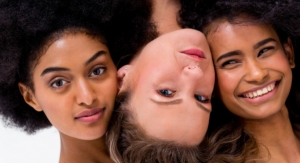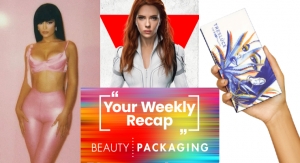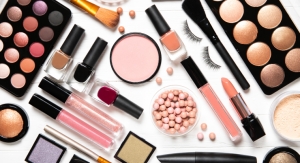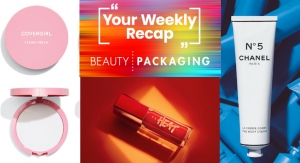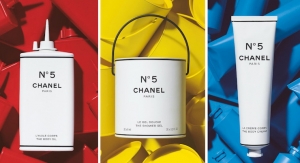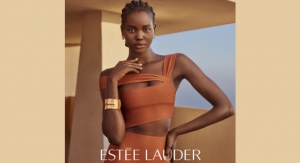Jamie Matusow, Editor-in-Chief , with Joanna Cosgrove, Contributing Editor11.02.18
Update: Chanel ranks at #16 on our latest report Top 20 Global Beauty Companies 2021.
Chanel is #16 on this year's list of Top Global Beauty Companies.
Below is a look at the company’s 2018 highlights, recent acquisitions, best-selling brands, and latest innovations.
Corporate Sales
$9.6 billion
Beauty
$3.2 billion (est.)
(FY 2017 Beauty Sales: $2.8 billion, est.)
Key Personnel
Major Products/Brands
New Products
Chanel Reveals Sales Figures, Focuses on Sustainability
As a privately held company, notoriously tight-lipped Chanel isn’t required to make its annual earnings public. This year, for the first time in the luxury company’s 108 years, it did. In a June press release, the company released financial results for the year ending December 31, 2017: Corporate sales climbed 11.5% to $9.62 billion.
The company said gains occurred across all three of its regional locals. Asia Pacific revenues climbed 16.5% to $3.7 billion, Europe increased 10.2% to $3.9 billion, and The Americas region rose 5.3 to $1.9 billon. While the company did not disclose the breakdown of gains across its fashion, cosmetic and jewelry categories, the successful launch of the brand’s latest signature fragrance, Gabrielle, no doubt added to the bottom line.
Chanel also continued to upgrade the distribution network of retail boutiques for its signature products, including Fragrance and Beauty, by investing in existing and new stores. Among the company’s 2017 openings was the announcement that Chanel established a new, London-headquartered holding company, Chanel Limited, to help bring all its businesses and 20,000 employees under a single roof. The move also helps simplify a legal and organizational structure that’s been in place since the 1950s. The company additionally opened a new flagship store in Ginza Namikidori, Tokyo in December 2017. Chanel also made unspecified investments in its manufacturing and distribution facilities to bolster agility and efficiencies and to boost innovation.
The company also specified the importance of responsible and sustainable business practices, noting that it invested in unspecified sustainability projects, “completed a green energy policy,” and embedded its human rights and environmental policies into its supply chain.
New policies were implemented, covering parental leave for women and men, as well as a strengthened commitment to company-wide diversity and inclusion, evidenced in a commitment to The Chanel Foundation, founded seven years ago to promote economic and social support for women and girls in “vulnerable conditions.” Chanel pledged that the foundation would invest more than $120 million in “advancing the role of women in society” over the next year.
News of Note in 2018
In March, Chanel announced that it would expand its distribution into select Ulta stores with an abbreviated assortment of lipstick, blush, foundation, and skincare products.
In June, the company sunk $81.5 million into the purchase of the 17-story Midtown East New York headquarters it’s leased since 1993.
In June, Chanel debuted Le Volume Révolution de Chanel, an innovative new mascara with the industry’s first 3D-printed brush.
The “honeycomb” wand, which is made by Erpro, a French 3D-printing company, is said to be designed to feature micro-reservoirs that facilitate optimum absorption and delivery of the mascara for long lasting, clump-free wear. The design was originally patented in 2007 and only now ready for production. According to Chanel, the 3D-printed brush eliminates traditional molds and can be replicated more efficiently, enabling the production of 50,000 brushes in 24 hours or roughly 1 million brushes per month. The formula is enriched with vitamins and a combination of rice wax, beeswax and nourishing, volumizing polymers that promise defined lashes that are soft and thick.
In September, Chanel entered the men’s makeup market with the launch of a three-product line called Boy de Chanel. Comprised of four shades of tinted foundation fluid, a matte moisturizing lip balm and four shades of eyebrow pencil, the line is a nod to Gabrielle Chanel’s use of men’s wardrobe elements in women’s fashion. Launched in September in South Korea, the company plans a worldwide roll out on Chanel’s e-commerce platforms beginning in January 2019.
In September, Chanel also announced that it would launch its iconic Chanel No. 5 L’eau and eau de parfum in limited edition red glass and crystal bottles. How limited? Just 55 red Baccarat crystal bottles will be made for the 900ml parfum.
Read Next: Colgate-Palmolive is #17
Chanel is #16 on this year's list of Top Global Beauty Companies.
Below is a look at the company’s 2018 highlights, recent acquisitions, best-selling brands, and latest innovations.
Corporate Sales
$9.6 billion
Beauty
$3.2 billion (est.)
(FY 2017 Beauty Sales: $2.8 billion, est.)
Key Personnel
- Alain Wertheimer, global chief executive officer and co-chairman
- Gerard Wertheimer, co-chairman
- Philippe Blondiaux, chief financial officer
Major Products/Brands
- Chanel No. 5, Allure, Allure Homme, Coco, Coco Mademoiselle
- Chance, No.19, Cristalle, Pour Monsieur, Antaeus, Egoïste,
- Les Exclusifs and Bleu de Chanel fragrances; Sublimage,
- Ultra Correction Lift and Line Repair, Hydramax + Active, White Essentiel,
- Le Blanc and Hydra-Beauty skin care; Rouge Allure, Rouge Coco, Le Vernis,
- Inimitable, Inimitable Intense, Les 4 Ombres, Vitalumière and Joues Contrastes color cosmetics
New Products
- Gabrielle fragrance
- Neon Wave cosmetics collection
- Jumbo Longwear Lip Crayon
- Le Rouge Crayon De Couleur Mat Subversion
- Boy de Chanel makeup for Men
- Le Volume Révolution de Chanel mascara
Chanel Reveals Sales Figures, Focuses on Sustainability
As a privately held company, notoriously tight-lipped Chanel isn’t required to make its annual earnings public. This year, for the first time in the luxury company’s 108 years, it did. In a June press release, the company released financial results for the year ending December 31, 2017: Corporate sales climbed 11.5% to $9.62 billion.
The company said gains occurred across all three of its regional locals. Asia Pacific revenues climbed 16.5% to $3.7 billion, Europe increased 10.2% to $3.9 billion, and The Americas region rose 5.3 to $1.9 billon. While the company did not disclose the breakdown of gains across its fashion, cosmetic and jewelry categories, the successful launch of the brand’s latest signature fragrance, Gabrielle, no doubt added to the bottom line.
Chanel also continued to upgrade the distribution network of retail boutiques for its signature products, including Fragrance and Beauty, by investing in existing and new stores. Among the company’s 2017 openings was the announcement that Chanel established a new, London-headquartered holding company, Chanel Limited, to help bring all its businesses and 20,000 employees under a single roof. The move also helps simplify a legal and organizational structure that’s been in place since the 1950s. The company additionally opened a new flagship store in Ginza Namikidori, Tokyo in December 2017. Chanel also made unspecified investments in its manufacturing and distribution facilities to bolster agility and efficiencies and to boost innovation.
The company also specified the importance of responsible and sustainable business practices, noting that it invested in unspecified sustainability projects, “completed a green energy policy,” and embedded its human rights and environmental policies into its supply chain.
New policies were implemented, covering parental leave for women and men, as well as a strengthened commitment to company-wide diversity and inclusion, evidenced in a commitment to The Chanel Foundation, founded seven years ago to promote economic and social support for women and girls in “vulnerable conditions.” Chanel pledged that the foundation would invest more than $120 million in “advancing the role of women in society” over the next year.
News of Note in 2018
In March, Chanel announced that it would expand its distribution into select Ulta stores with an abbreviated assortment of lipstick, blush, foundation, and skincare products.
In June, the company sunk $81.5 million into the purchase of the 17-story Midtown East New York headquarters it’s leased since 1993.
In June, Chanel debuted Le Volume Révolution de Chanel, an innovative new mascara with the industry’s first 3D-printed brush.
The “honeycomb” wand, which is made by Erpro, a French 3D-printing company, is said to be designed to feature micro-reservoirs that facilitate optimum absorption and delivery of the mascara for long lasting, clump-free wear. The design was originally patented in 2007 and only now ready for production. According to Chanel, the 3D-printed brush eliminates traditional molds and can be replicated more efficiently, enabling the production of 50,000 brushes in 24 hours or roughly 1 million brushes per month. The formula is enriched with vitamins and a combination of rice wax, beeswax and nourishing, volumizing polymers that promise defined lashes that are soft and thick.
In September, Chanel entered the men’s makeup market with the launch of a three-product line called Boy de Chanel. Comprised of four shades of tinted foundation fluid, a matte moisturizing lip balm and four shades of eyebrow pencil, the line is a nod to Gabrielle Chanel’s use of men’s wardrobe elements in women’s fashion. Launched in September in South Korea, the company plans a worldwide roll out on Chanel’s e-commerce platforms beginning in January 2019.
In September, Chanel also announced that it would launch its iconic Chanel No. 5 L’eau and eau de parfum in limited edition red glass and crystal bottles. How limited? Just 55 red Baccarat crystal bottles will be made for the 900ml parfum.
Read Next: Colgate-Palmolive is #17








